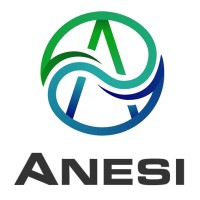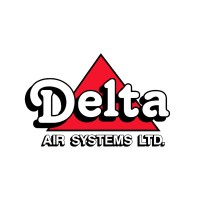Company Details
coleman-heating-and-air
None employees
1,074
3334
colemanac.com
0
COL_3026237
In-progress

Coleman Heating and Air Conditioning Company CyberSecurity Posture
colemanac.comColeman® HVAC systems have provided comfort since the 1930s and have a licensed partnership with Johnson Controls. Exceeding your expectations requires an eye toward the future with a focus on your needs today. That’s why, when it comes to building products for homes and businesses, we believe in focusing on quality at every stage, with every product. So we closely monitor and improve processes that impact quality. Because it takes more than just metal and circuitry to make a Coleman® heating and cooling unit – it takes people of integrity and an ongoing dedication to quality. Coleman is a trademark of The Coleman Company, Inc. used under license.
Company Details
coleman-heating-and-air
None employees
1,074
3334
colemanac.com
0
COL_3026237
In-progress
Between 700 and 749

 CHAC Global Score (TPRM)
CHAC Global Score (TPRM)XXXX

Description: A denial of service attack has targeted the Finnish Transport and Communications Agency Traficom once more. Access to Traficom's electronic transaction services has been restricted as a result of a service denial attack. The agency posts on the social media platform Twitter that the goal is to promptly restore services. Services are being promptly restored as the attack prevention measures take effect.
Description: A'massive ransomware attack' reportedly affected Johnson Controls International, encrypting many company devices, including VMware ESXi servers, and negatively affecting the business operations of both the parent corporation and its subsidiaries. Development and production of industrial control systems, security tools, air conditioners, and fire safety gear are all activities of the international company Johnson Controls. However, the incident has disrupted some of the Company's business operations and is anticipated to continue doing so. The Company is evaluating the incident's potential effects on its ability to deliver its financial results for the entire fiscal year and the fourth quarter on schedule.
Description: Johnson Controls, a critical infrastructure provider, faced severe exposure of its industrial control systems (ICS) due to unpatched vulnerabilities and misconfigurations. The systems, integral to power grids, water treatment plants, and manufacturing operations, were left accessible online with default credentials or known flaws. This negligence enabled potential cyber intrusions capable of triggering catastrophic outcomes—such as blackouts, chemical contamination (e.g., tampering with chlorine levels in water utilities), or operational shutdowns in energy and healthcare sectors. The 2025 CISA advisory highlighted these vulnerabilities as high-severity risks, emphasizing the systemic failure to enforce air-gapping or zero-trust security models. The lapse not only jeopardized public safety but also invited state-sponsored or criminal exploitation, amplifying threats to national security. The company’s delayed mitigation efforts, coupled with regulatory gaps and legacy system dependencies, exacerbated the exposure, leaving critical infrastructure defenseless against attacks with life-threatening or war-escalating potential.


No incidents recorded for Coleman Heating and Air Conditioning in 2025.
No incidents recorded for Coleman Heating and Air Conditioning in 2025.
No incidents recorded for Coleman Heating and Air Conditioning in 2025.
CHAC cyber incidents detection timeline including parent company and subsidiaries

Coleman® HVAC systems have provided comfort since the 1930s and have a licensed partnership with Johnson Controls. Exceeding your expectations requires an eye toward the future with a focus on your needs today. That’s why, when it comes to building products for homes and businesses, we believe in focusing on quality at every stage, with every product. So we closely monitor and improve processes that impact quality. Because it takes more than just metal and circuitry to make a Coleman® heating and cooling unit – it takes people of integrity and an ongoing dedication to quality. Coleman is a trademark of The Coleman Company, Inc. used under license.


We are proud to be one of the world’s largest independent distributors of Trane commercial, industrial, and residential heating and air conditioning systems, equipment, and controls. Since 1981, the Hunton Group has delivered innovative solutions for indoor air quality (IAQ) and intelligent energy s

ANESI heat pumps are manufactured by Stone Mountain Technologies, Inc. in Piney Flats, TN. This best-in-class heating solution uses the existing natural gas or propane fuel supply to homes and small commercial buildings. Anesi gas heat pumps include patented compressor-less technology and operate w
enVerid Systems’ award-winning Sorbent Ventilation Technology® (SVT®) reduces the cost and carbon emissions of heating, ventilating, and air conditioning commercial buildings and increases their resiliency to polluted outside air. SVT delivers these benefits by filtering harmful contaminants from in
Blue Box Air, LLC is an innovative solution for reducing energy consumption and costs, while reducing CO2. Our innovation is our patented process for cleaning the coils in HVAC systems, which improves air quality and facility health while reducing the environmental footprint. There has never been

An HVAC company located in Waterloo Ontario. Serving residential and commercial customers with heating, air conditioning and indoor air quality products sales and service. Delta was established over 40 years ago and has experienced steady growth by focusing on quality installations and customer se

Founded in 1987 by President, Jack Eliav, Mits Air has grown from a single room operation to an HVAC distribution company with 5 fully stocked branches, 9 distribution warehouses and partner distribution services across North America. Our Mits Air team members include engineers and industry expert
.png)
PRNewswire/ -- The National Cyber Security Alliance (NCSA) today announced that former government cybersecurity expert Kelvin Coleman has...
By Kevin Coleman. As if fire investigations were not complex enough and the pursuit of arson charges against a suspect were not already...

Explore insights on cybersecurity incidents, risk posture, and Rankiteo's assessments.
The official website of Coleman Heating and Air Conditioning is https://www.colemanac.com/.
According to Rankiteo, Coleman Heating and Air Conditioning’s AI-generated cybersecurity score is 745, reflecting their Moderate security posture.
According to Rankiteo, Coleman Heating and Air Conditioning currently holds 0 security badges, indicating that no recognized compliance certifications are currently verified for the organization.
According to Rankiteo, Coleman Heating and Air Conditioning is not certified under SOC 2 Type 1.
According to Rankiteo, Coleman Heating and Air Conditioning does not hold a SOC 2 Type 2 certification.
According to Rankiteo, Coleman Heating and Air Conditioning is not listed as GDPR compliant.
According to Rankiteo, Coleman Heating and Air Conditioning does not currently maintain PCI DSS compliance.
According to Rankiteo, Coleman Heating and Air Conditioning is not compliant with HIPAA regulations.
According to Rankiteo,Coleman Heating and Air Conditioning is not certified under ISO 27001, indicating the absence of a formally recognized information security management framework.
Coleman Heating and Air Conditioning operates primarily in the HVAC and Refrigeration Equipment Manufacturing industry.
Coleman Heating and Air Conditioning employs approximately None employees people worldwide.
Coleman Heating and Air Conditioning presently has no subsidiaries across any sectors.
Coleman Heating and Air Conditioning’s official LinkedIn profile has approximately 1,074 followers.
Coleman Heating and Air Conditioning is classified under the NAICS code 3334, which corresponds to Ventilation, Heating, Air-Conditioning, and Commercial Refrigeration Equipment Manufacturing.
No, Coleman Heating and Air Conditioning does not have a profile on Crunchbase.
Yes, Coleman Heating and Air Conditioning maintains an official LinkedIn profile, which is actively utilized for branding and talent engagement, which can be accessed here: https://www.linkedin.com/company/coleman-heating-and-air.
As of November 28, 2025, Rankiteo reports that Coleman Heating and Air Conditioning has experienced 3 cybersecurity incidents.
Coleman Heating and Air Conditioning has an estimated 151 peer or competitor companies worldwide.
Incident Types: The types of cybersecurity incidents that have occurred include Ransomware, Vulnerability and Cyber Attack.
Total Financial Loss: The total financial loss from these incidents is estimated to be $0.
Detection and Response: The company detects and responds to cybersecurity incidents through an containment measures with attack prevention measures, and recovery measures with prompt restoration of services, and communication strategy with posted updates on twitter, and third party assistance with bitsight (cybersecurity firm), third party assistance with cisa (cybersecurity and infrastructure security agency), and containment measures with comprehensive asset inventories, containment measures with immediate patching of vulnerabilities, containment measures with network segmentation, and remediation measures with implementation of continuous monitoring, remediation measures with adoption of zero-trust models, remediation measures with air-gapping critical systems, and communication strategy with cisa advisories (e.g., may 2025 alert on johnson controls’ systems), communication strategy with industry reports by bitsight and cybersecurity dive, and network segmentation with advocated as a key mitigation strategy, and enhanced monitoring with organizations with continuous monitoring reduced exposure by up to 40%..
Title: Massive Ransomware Attack on Johnson Controls International
Description: A significant ransomware attack affected Johnson Controls International, encrypting many company devices, including VMware ESXi servers. The incident negatively impacted the business operations of both the parent corporation and its subsidiaries.
Type: Ransomware
Motivation: Financial Gain
Title: Denial of Service Attack on Finnish Transport and Communications Agency Traficom
Description: A denial of service attack has targeted the Finnish Transport and Communications Agency Traficom, restricting access to its electronic transaction services. The agency aims to promptly restore services as attack prevention measures take effect.
Type: Denial of Service
Attack Vector: Denial of Service (DoS)
Title: Mass Exposure of Industrial Control Systems to the Open Internet
Description: Nearly 200,000 industrial control systems (ICS), critical to power grids, water treatment plants, and manufacturing lines, are exposed to the open internet due to convenience-driven configurations, outdated security practices, and lack of safeguards. These systems, often running legacy software with unpatched vulnerabilities or default credentials, are vulnerable to cyberattacks that could trigger blackouts, chemical spills, or other catastrophic failures. The trend is accelerating due to digital transformation initiatives prioritizing operational efficiency over cybersecurity, with newly deployed systems in sectors like energy, transportation, and healthcare also appearing online without firewalls or encryption. Human error, misconfigurations, and regulatory gaps further exacerbate the issue, while experts advocate for asset inventories, patching, network segmentation, and AI-driven threat detection to mitigate risks.
Type: Exposure of Critical Infrastructure
Attack Vector: Publicly Accessible DevicesDefault CredentialsUnpatched Software VulnerabilitiesLack of Firewalls/Encryption
Vulnerability Exploited: Critical CVSS-rated vulnerabilities in legacy and new ICS devicesDefault passwordsMisconfigurations in operational technology (OT) systems
Common Attack Types: The most common types of attacks the company has faced is Cyber Attack.
Identification of Attack Vectors: The company identifies the attack vectors used in incidents through Publicly accessible ICS devicesDefault credentialsUnpatched vulnerabilities.

Financial Loss: Potential delay in reporting financial results
Systems Affected: VMware ESXi serverscompany devices
Downtime: Ongoing disruption of business operations
Operational Impact: Significant

Systems Affected: Electronic transaction services
Operational Impact: Service disruption

Systems Affected: Industrial Control Systems (ICS)Programmable Logic Controllers (PLCs)Water treatment control systemsEnergy sector devices (oil pipelines, electrical substations)Transportation infrastructureHealthcare infrastructure
Operational Impact: Potential blackoutsChemical spillsManipulation of critical processes (e.g., chlorine levels in water treatment)Cascading failures in interconnected systems
Brand Reputation Impact: Erosion of public trust in critical infrastructure securityPerception of negligence in safeguarding essential services
Average Financial Loss: The average financial loss per incident is $0.00.

Entity Name: Johnson Controls International
Entity Type: Corporation
Industry: Industrial Control Systems, Security Tools, Air Conditioners, Fire Safety Gear

Entity Name: Finnish Transport and Communications Agency Traficom
Entity Type: Government Agency
Industry: Transport and Communications
Location: Finland

Entity Type: Critical Infrastructure Operators, Industrial Facilities, Energy Sector Companies, Water Treatment Plants, Manufacturing Plants, Transportation Systems, Healthcare Infrastructure
Industry: Energy, Water/Wastewater, Manufacturing, Transportation, Healthcare
Location: Global (with specific emphasis on regions undergoing digital transformation)

Containment Measures: Attack prevention measures
Recovery Measures: Prompt restoration of services
Communication Strategy: Posted updates on Twitter

Third Party Assistance: Bitsight (Cybersecurity Firm), Cisa (Cybersecurity And Infrastructure Security Agency).
Containment Measures: Comprehensive asset inventoriesImmediate patching of vulnerabilitiesNetwork segmentation
Remediation Measures: Implementation of continuous monitoringAdoption of zero-trust modelsAir-gapping critical systems
Communication Strategy: CISA advisories (e.g., May 2025 alert on Johnson Controls’ systems)Industry reports by Bitsight and Cybersecurity Dive
Network Segmentation: Advocated as a key mitigation strategy
Enhanced Monitoring: Organizations with continuous monitoring reduced exposure by up to 40%
Third-Party Assistance: The company involves third-party assistance in incident response through Bitsight (cybersecurity firm), CISA (Cybersecurity and Infrastructure Security Agency), .

Data Encryption: True

Data Encryption: ['Lack of encryption in exposed systems']
Prevention of Data Exfiltration: The company takes the following measures to prevent data exfiltration: Implementation of continuous monitoring, Adoption of zero-trust models, Air-gapping critical systems, .
Handling of PII Incidents: The company handles incidents involving personally identifiable information (PII) through by attack prevention measures, comprehensive asset inventories, immediate patching of vulnerabilities, network segmentation and .

Data Encryption: True
Data Recovery from Ransomware: The company recovers data encrypted by ransomware through Prompt restoration of services.

Regulatory Notifications: CISA advisories (e.g., May 2025 alert on Johnson Controls’ vulnerabilities)

Lessons Learned: Convenience-driven configurations (e.g., remote access) without adequate security expose critical infrastructure to severe risks., Legacy and new ICS devices often lack basic safeguards like firewalls, encryption, or updated credentials., Human error and misconfigurations by IT teams unfamiliar with OT systems are major contributors to exposure., Regulatory gaps and inconsistent enforcement allow vulnerabilities to persist., Digital transformation must prioritize security alongside operational efficiency to avoid amplifying risks.

Recommendations: Conduct comprehensive inventories of all connected ICS/OT assets., Immediately patch known vulnerabilities, especially those with critical CVSS ratings., Implement network segmentation and zero-trust models to limit exposure., Enforce mandatory air-gapping for the most critical systems where feasible., Replace default credentials and enforce strong authentication mechanisms., Adopt continuous monitoring to detect and respond to exposures in real-time., Integrate AI-driven threat detection to identify anomalies and potential attacks., Prioritize cybersecurity training for IT and OT teams to address skill gaps., Strengthen regulatory frameworks with mandatory compliance and enforcement mechanisms., Foster a cultural shift to prioritize security over convenience in operational decisions.Conduct comprehensive inventories of all connected ICS/OT assets., Immediately patch known vulnerabilities, especially those with critical CVSS ratings., Implement network segmentation and zero-trust models to limit exposure., Enforce mandatory air-gapping for the most critical systems where feasible., Replace default credentials and enforce strong authentication mechanisms., Adopt continuous monitoring to detect and respond to exposures in real-time., Integrate AI-driven threat detection to identify anomalies and potential attacks., Prioritize cybersecurity training for IT and OT teams to address skill gaps., Strengthen regulatory frameworks with mandatory compliance and enforcement mechanisms., Foster a cultural shift to prioritize security over convenience in operational decisions.Conduct comprehensive inventories of all connected ICS/OT assets., Immediately patch known vulnerabilities, especially those with critical CVSS ratings., Implement network segmentation and zero-trust models to limit exposure., Enforce mandatory air-gapping for the most critical systems where feasible., Replace default credentials and enforce strong authentication mechanisms., Adopt continuous monitoring to detect and respond to exposures in real-time., Integrate AI-driven threat detection to identify anomalies and potential attacks., Prioritize cybersecurity training for IT and OT teams to address skill gaps., Strengthen regulatory frameworks with mandatory compliance and enforcement mechanisms., Foster a cultural shift to prioritize security over convenience in operational decisions.Conduct comprehensive inventories of all connected ICS/OT assets., Immediately patch known vulnerabilities, especially those with critical CVSS ratings., Implement network segmentation and zero-trust models to limit exposure., Enforce mandatory air-gapping for the most critical systems where feasible., Replace default credentials and enforce strong authentication mechanisms., Adopt continuous monitoring to detect and respond to exposures in real-time., Integrate AI-driven threat detection to identify anomalies and potential attacks., Prioritize cybersecurity training for IT and OT teams to address skill gaps., Strengthen regulatory frameworks with mandatory compliance and enforcement mechanisms., Foster a cultural shift to prioritize security over convenience in operational decisions.Conduct comprehensive inventories of all connected ICS/OT assets., Immediately patch known vulnerabilities, especially those with critical CVSS ratings., Implement network segmentation and zero-trust models to limit exposure., Enforce mandatory air-gapping for the most critical systems where feasible., Replace default credentials and enforce strong authentication mechanisms., Adopt continuous monitoring to detect and respond to exposures in real-time., Integrate AI-driven threat detection to identify anomalies and potential attacks., Prioritize cybersecurity training for IT and OT teams to address skill gaps., Strengthen regulatory frameworks with mandatory compliance and enforcement mechanisms., Foster a cultural shift to prioritize security over convenience in operational decisions.Conduct comprehensive inventories of all connected ICS/OT assets., Immediately patch known vulnerabilities, especially those with critical CVSS ratings., Implement network segmentation and zero-trust models to limit exposure., Enforce mandatory air-gapping for the most critical systems where feasible., Replace default credentials and enforce strong authentication mechanisms., Adopt continuous monitoring to detect and respond to exposures in real-time., Integrate AI-driven threat detection to identify anomalies and potential attacks., Prioritize cybersecurity training for IT and OT teams to address skill gaps., Strengthen regulatory frameworks with mandatory compliance and enforcement mechanisms., Foster a cultural shift to prioritize security over convenience in operational decisions.Conduct comprehensive inventories of all connected ICS/OT assets., Immediately patch known vulnerabilities, especially those with critical CVSS ratings., Implement network segmentation and zero-trust models to limit exposure., Enforce mandatory air-gapping for the most critical systems where feasible., Replace default credentials and enforce strong authentication mechanisms., Adopt continuous monitoring to detect and respond to exposures in real-time., Integrate AI-driven threat detection to identify anomalies and potential attacks., Prioritize cybersecurity training for IT and OT teams to address skill gaps., Strengthen regulatory frameworks with mandatory compliance and enforcement mechanisms., Foster a cultural shift to prioritize security over convenience in operational decisions.Conduct comprehensive inventories of all connected ICS/OT assets., Immediately patch known vulnerabilities, especially those with critical CVSS ratings., Implement network segmentation and zero-trust models to limit exposure., Enforce mandatory air-gapping for the most critical systems where feasible., Replace default credentials and enforce strong authentication mechanisms., Adopt continuous monitoring to detect and respond to exposures in real-time., Integrate AI-driven threat detection to identify anomalies and potential attacks., Prioritize cybersecurity training for IT and OT teams to address skill gaps., Strengthen regulatory frameworks with mandatory compliance and enforcement mechanisms., Foster a cultural shift to prioritize security over convenience in operational decisions.Conduct comprehensive inventories of all connected ICS/OT assets., Immediately patch known vulnerabilities, especially those with critical CVSS ratings., Implement network segmentation and zero-trust models to limit exposure., Enforce mandatory air-gapping for the most critical systems where feasible., Replace default credentials and enforce strong authentication mechanisms., Adopt continuous monitoring to detect and respond to exposures in real-time., Integrate AI-driven threat detection to identify anomalies and potential attacks., Prioritize cybersecurity training for IT and OT teams to address skill gaps., Strengthen regulatory frameworks with mandatory compliance and enforcement mechanisms., Foster a cultural shift to prioritize security over convenience in operational decisions.Conduct comprehensive inventories of all connected ICS/OT assets., Immediately patch known vulnerabilities, especially those with critical CVSS ratings., Implement network segmentation and zero-trust models to limit exposure., Enforce mandatory air-gapping for the most critical systems where feasible., Replace default credentials and enforce strong authentication mechanisms., Adopt continuous monitoring to detect and respond to exposures in real-time., Integrate AI-driven threat detection to identify anomalies and potential attacks., Prioritize cybersecurity training for IT and OT teams to address skill gaps., Strengthen regulatory frameworks with mandatory compliance and enforcement mechanisms., Foster a cultural shift to prioritize security over convenience in operational decisions.
Key Lessons Learned: The key lessons learned from past incidents are Convenience-driven configurations (e.g., remote access) without adequate security expose critical infrastructure to severe risks.,Legacy and new ICS devices often lack basic safeguards like firewalls, encryption, or updated credentials.,Human error and misconfigurations by IT teams unfamiliar with OT systems are major contributors to exposure.,Regulatory gaps and inconsistent enforcement allow vulnerabilities to persist.,Digital transformation must prioritize security alongside operational efficiency to avoid amplifying risks.
Implemented Recommendations: The company has implemented the following recommendations to improve cybersecurity: Enforce mandatory air-gapping for the most critical systems where feasible., Foster a cultural shift to prioritize security over convenience in operational decisions., Immediately patch known vulnerabilities, especially those with critical CVSS ratings., Replace default credentials and enforce strong authentication mechanisms., Conduct comprehensive inventories of all connected ICS/OT assets., Adopt continuous monitoring to detect and respond to exposures in real-time., Strengthen regulatory frameworks with mandatory compliance and enforcement mechanisms., Implement network segmentation and zero-trust models to limit exposure., Integrate AI-driven threat detection to identify anomalies and potential attacks. and Prioritize cybersecurity training for IT and OT teams to address skill gaps..

Source: Twitter

Source: Bitsight Report on Exposed Industrial Control Systems

Source: Cybersecurity Dive Analysis on Digital Transformation Risks

Source: CISA Advisory (May 2025) on Johnson Controls’ Vulnerabilities
URL: https://www.cisa.gov
Additional Resources: Stakeholders can find additional resources on cybersecurity best practices at and Source: Twitter, and Source: Bitsight Report on Exposed Industrial Control Systems, and Source: Cybersecurity Dive Analysis on Digital Transformation Risks, and Source: CISA Advisory (May 2025) on Johnson Controls’ VulnerabilitiesUrl: https://www.cisa.gov.

Investigation Status: Ongoing (trend analysis by Bitsight and CISA; no specific incident under investigation)
Communication of Investigation Status: The company communicates the status of incident investigations to stakeholders through Posted updates on Twitter, Cisa Advisories (E.G., May 2025 Alert On Johnson Controls’ Systems) and Industry Reports By Bitsight And Cybersecurity Dive.

Stakeholder Advisories: Cisa Alerts, Bitsight Reports, Industry Analyst Warnings On Systemic Risks.
Advisories Provided: The company provides the following advisories to stakeholders and customers following an incident: were Cisa Alerts, Bitsight Reports and Industry Analyst Warnings On Systemic Risks.

Entry Point: Publicly Accessible Ics Devices, Default Credentials, Unpatched Vulnerabilities,
High Value Targets: Energy Grids, Water Treatment Systems, Manufacturing Control Systems, Transportation Infrastructure,
Data Sold on Dark Web: Energy Grids, Water Treatment Systems, Manufacturing Control Systems, Transportation Infrastructure,

Root Causes: Prioritization Of Operational Convenience Over Security In Ics/Ot Environments., Lack Of Basic Safeguards (Firewalls, Encryption, Updated Credentials) In Legacy And New Systems., Human Error And Misconfigurations Due To It/Ot Skill Gaps., Regulatory Gaps And Inconsistent Enforcement Of Cybersecurity Standards., Digital Transformation Initiatives Accelerating Exposure Without Adequate Security Controls.,
Corrective Actions: Mandate Asset Inventories And Vulnerability Assessments For All Ics/Ot Devices., Enforce Patch Management And Configuration Hardening For Exposed Systems., Implement Network Segmentation And Zero-Trust Architectures To Limit Lateral Movement., Adopt Continuous Monitoring And Ai-Driven Anomaly Detection., Strengthen Regulatory Oversight With Enforceable Compliance Requirements., Invest In Cybersecurity Training For It And Ot Personnel., Promote A Security-First Culture In Critical Infrastructure Operations.,
Post-Incident Analysis Process: The company's process for conducting post-incident analysis is described as Bitsight (Cybersecurity Firm), Cisa (Cybersecurity And Infrastructure Security Agency), , Organizations with continuous monitoring reduced exposure by up to 40%.
Corrective Actions Taken: The company has taken the following corrective actions based on post-incident analysis: Mandate Asset Inventories And Vulnerability Assessments For All Ics/Ot Devices., Enforce Patch Management And Configuration Hardening For Exposed Systems., Implement Network Segmentation And Zero-Trust Architectures To Limit Lateral Movement., Adopt Continuous Monitoring And Ai-Driven Anomaly Detection., Strengthen Regulatory Oversight With Enforceable Compliance Requirements., Invest In Cybersecurity Training For It And Ot Personnel., Promote A Security-First Culture In Critical Infrastructure Operations., .
Highest Financial Loss: The highest financial loss from an incident was Potential delay in reporting financial results.
Most Significant System Affected: The most significant system affected in an incident were VMware ESXi serverscompany devices and Electronic transaction services and Industrial Control Systems (ICS)Programmable Logic Controllers (PLCs)Water treatment control systemsEnergy sector devices (oil pipelines, electrical substations)Transportation infrastructureHealthcare infrastructure.
Third-Party Assistance in Most Recent Incident: The third-party assistance involved in the most recent incident was bitsight (cybersecurity firm), cisa (cybersecurity and infrastructure security agency), .
Containment Measures in Most Recent Incident: The containment measures taken in the most recent incident were Attack prevention measures and Comprehensive asset inventoriesImmediate patching of vulnerabilitiesNetwork segmentation.
Most Significant Lesson Learned: The most significant lesson learned from past incidents was Digital transformation must prioritize security alongside operational efficiency to avoid amplifying risks.
Most Significant Recommendation Implemented: The most significant recommendation implemented to improve cybersecurity was Enforce mandatory air-gapping for the most critical systems where feasible., Foster a cultural shift to prioritize security over convenience in operational decisions., Immediately patch known vulnerabilities, especially those with critical CVSS ratings., Replace default credentials and enforce strong authentication mechanisms., Conduct comprehensive inventories of all connected ICS/OT assets., Adopt continuous monitoring to detect and respond to exposures in real-time., Strengthen regulatory frameworks with mandatory compliance and enforcement mechanisms., Implement network segmentation and zero-trust models to limit exposure., Integrate AI-driven threat detection to identify anomalies and potential attacks. and Prioritize cybersecurity training for IT and OT teams to address skill gaps..
Most Recent Source: The most recent source of information about an incident are Cybersecurity Dive Analysis on Digital Transformation Risks, Bitsight Report on Exposed Industrial Control Systems, Twitter and CISA Advisory (May 2025) on Johnson Controls’ Vulnerabilities.
Most Recent URL for Additional Resources: The most recent URL for additional resources on cybersecurity best practices is https://www.cisa.gov .
Current Status of Most Recent Investigation: The current status of the most recent investigation is Ongoing (trend analysis by Bitsight and CISA; no specific incident under investigation).
Most Recent Stakeholder Advisory: The most recent stakeholder advisory issued was CISA alerts, Bitsight reports, Industry analyst warnings on systemic risks, .
.png)
Angular is a development platform for building mobile and desktop web applications using TypeScript/JavaScript and other languages. Prior to versions 19.2.16, 20.3.14, and 21.0.1, there is a XSRF token leakage via protocol-relative URLs in angular HTTP clients. The vulnerability is a Credential Leak by App Logic that leads to the unauthorized disclosure of the Cross-Site Request Forgery (XSRF) token to an attacker-controlled domain. Angular's HttpClient has a built-in XSRF protection mechanism that works by checking if a request URL starts with a protocol (http:// or https://) to determine if it is cross-origin. If the URL starts with protocol-relative URL (//), it is incorrectly treated as a same-origin request, and the XSRF token is automatically added to the X-XSRF-TOKEN header. This issue has been patched in versions 19.2.16, 20.3.14, and 21.0.1. A workaround for this issue involves avoiding using protocol-relative URLs (URLs starting with //) in HttpClient requests. All backend communication URLs should be hardcoded as relative paths (starting with a single /) or fully qualified, trusted absolute URLs.
Forge (also called `node-forge`) is a native implementation of Transport Layer Security in JavaScript. An Uncontrolled Recursion vulnerability in node-forge versions 1.3.1 and below enables remote, unauthenticated attackers to craft deep ASN.1 structures that trigger unbounded recursive parsing. This leads to a Denial-of-Service (DoS) via stack exhaustion when parsing untrusted DER inputs. This issue has been patched in version 1.3.2.
Forge (also called `node-forge`) is a native implementation of Transport Layer Security in JavaScript. An Integer Overflow vulnerability in node-forge versions 1.3.1 and below enables remote, unauthenticated attackers to craft ASN.1 structures containing OIDs with oversized arcs. These arcs may be decoded as smaller, trusted OIDs due to 32-bit bitwise truncation, enabling the bypass of downstream OID-based security decisions. This issue has been patched in version 1.3.2.
Suricata is a network IDS, IPS and NSM engine developed by the OISF (Open Information Security Foundation) and the Suricata community. Prior to versions 7.0.13 and 8.0.2, working with large buffers in Lua scripts can lead to a stack overflow. Users of Lua rules and output scripts may be affected when working with large buffers. This includes a rule passing a large buffer to a Lua script. This issue has been patched in versions 7.0.13 and 8.0.2. A workaround for this issue involves disabling Lua rules and output scripts, or making sure limits, such as stream.depth.reassembly and HTTP response body limits (response-body-limit), are set to less than half the stack size.
Suricata is a network IDS, IPS and NSM engine developed by the OISF (Open Information Security Foundation) and the Suricata community. In versions from 8.0.0 to before 8.0.2, a NULL dereference can occur when the entropy keyword is used in conjunction with base64_data. This issue has been patched in version 8.0.2. A workaround involves disabling rules that use entropy in conjunction with base64_data.

Get company history
















Every week, Rankiteo analyzes billions of signals to give organizations a sharper, faster view of emerging risks. With deeper, more actionable intelligence at their fingertips, security teams can outpace threat actors, respond instantly to Zero-Day attacks, and dramatically shrink their risk exposure window.
Identify exposed access points, detect misconfigured SSL certificates, and uncover vulnerabilities across the network infrastructure.
Gain visibility into the software components used within an organization to detect vulnerabilities, manage risk, and ensure supply chain security.
Monitor and manage all IT assets and their configurations to ensure accurate, real-time visibility across the company's technology environment.
Leverage real-time insights on active threats, malware campaigns, and emerging vulnerabilities to proactively defend against evolving cyberattacks.




